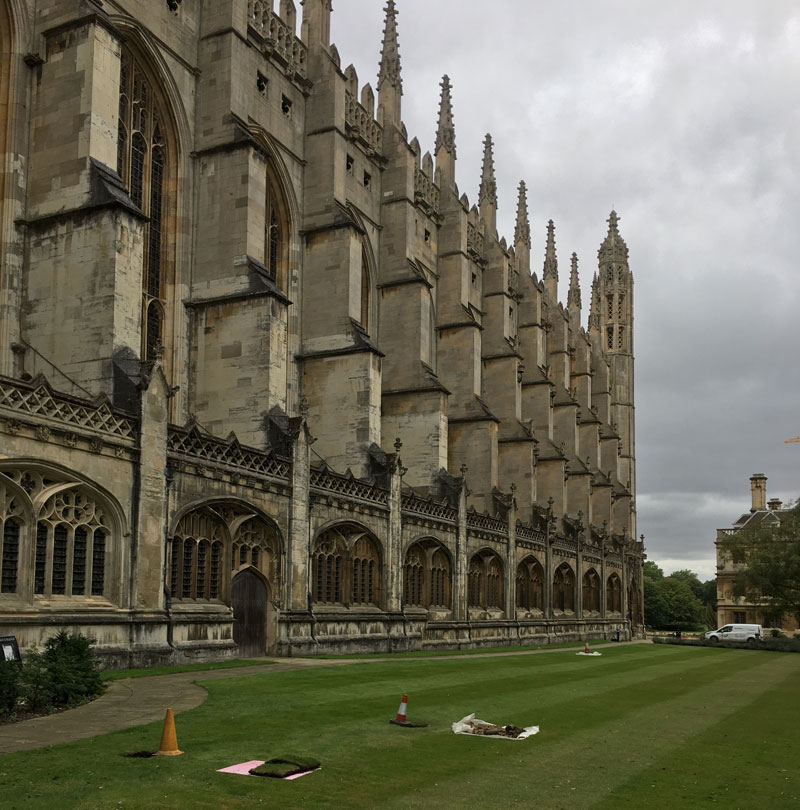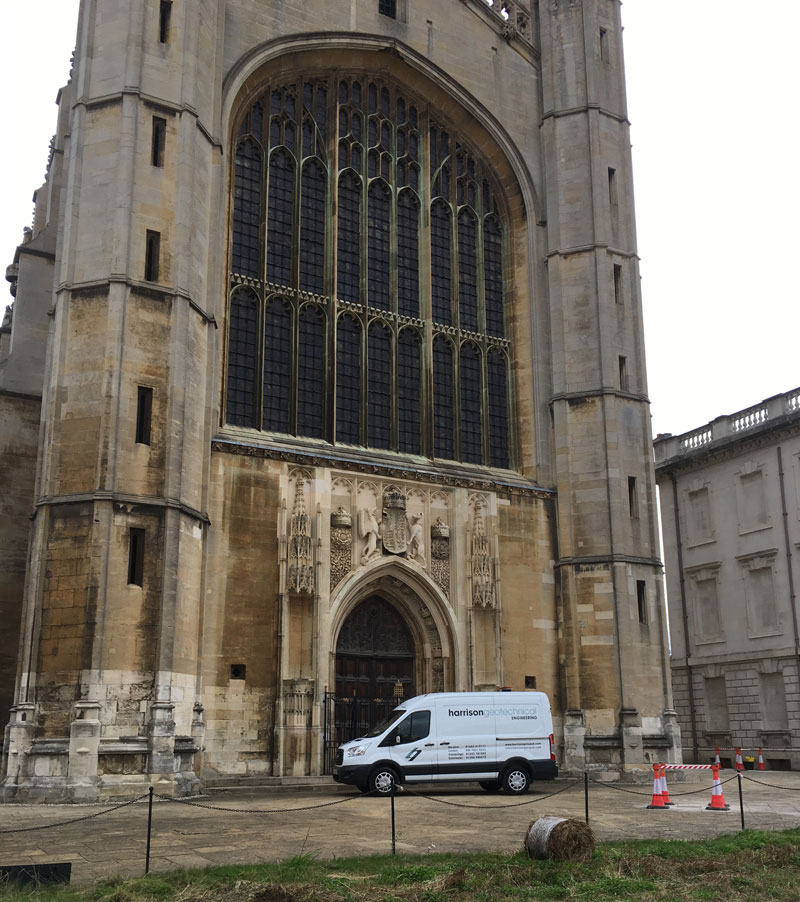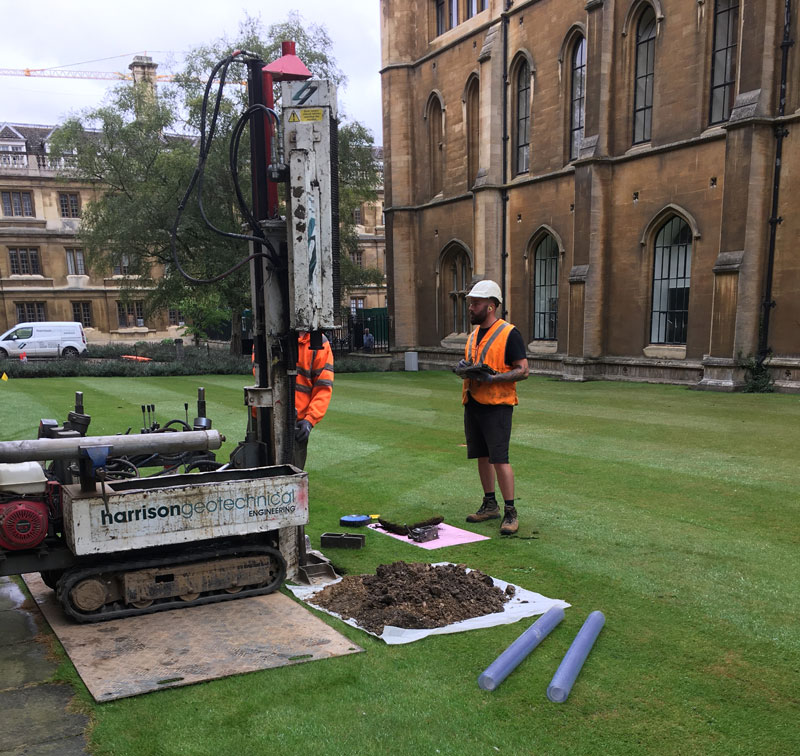
King’s College, Cambridge
LOCATION: King's College, Cambridge
PROJECT TYPE: Geotechnical site investigation
VALUE: £7K
BACKGROUND
King’s College Chapel is a Grade 1 listed collegiate chapel of the University of Cambridge, built in the 16th century and located in the heart of the historic city centre. Currently, repair work to the roof is programmed to be undertaken; and this is to be done whilst allowing the chapel to continue functioning as an active place of worship, as a home to King’s College Choir and to also accommodate the steady daily stream of visitors to the building.
Sizeable scaffolding would be required, to allow access for the work to take place. Due to the resultant mass of these temporary works, a ground investigation was required to assess the load bearing characteristics of the ground supporting the scaffolding, to ensure that the structure would be safe and secure.
In addition to this, an investigation was also required to establish groundwater levels underlying the chapel itself, providing information relating to planned conservation activities.
SCOPE OF WORK
Three boreholes were completed to a maximum depth of 4.45m, using a tracked window sampler rig. Matting was placed on the ground to prevent the tracks causing damage to the lawns, with the soil samples collected on plastic sheeting and logged by a geotechnical engineer.
In addition to this, in-situ testing was undertaken comprising dynamic cone penetrometer and lightweight deflectometer tests to determine the maximum allowable bearing capacity for the scaffolding bases.
Furthermore, five inspection pits were completed to investigate the construction and condition of the existing foundations of the chapel buttresses. These were hand-excavated to minimise possible damage to the integrity of the foundations and buried utility services.
It was essential that the University of Cambridge activities in the chapel and surrounding areas remained unaffected by the fieldwork operations. Measures were taken by Harrison Group to ensure this, which, for example, included minimising noisy activities during a performance by King’s College Choir inside the chapel.
Due to the sensitive nature of the location, it was necessary to leave the site in a pristine condition on completion of the fieldwork.
OUTCOME
The fieldwork was completed in two days, with investigation at 42 locations. Ground conditions were found to comprise extensive made ground (soil containing anthropogenic material), underlain by River Terrace Deposits. Gault Formation clay was proven at depth.
The buttress footings of the chapel were found to extend to depths in excess of 1.50m.
Ground bearing capacity at the locations of the scaffold bases was found to be satisfactory in all cases to allow for the use of conventional load spreaders, thus avoiding the time and cost penalties of additional temporary works.



